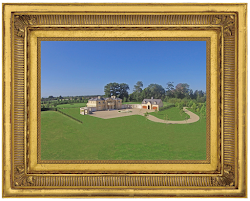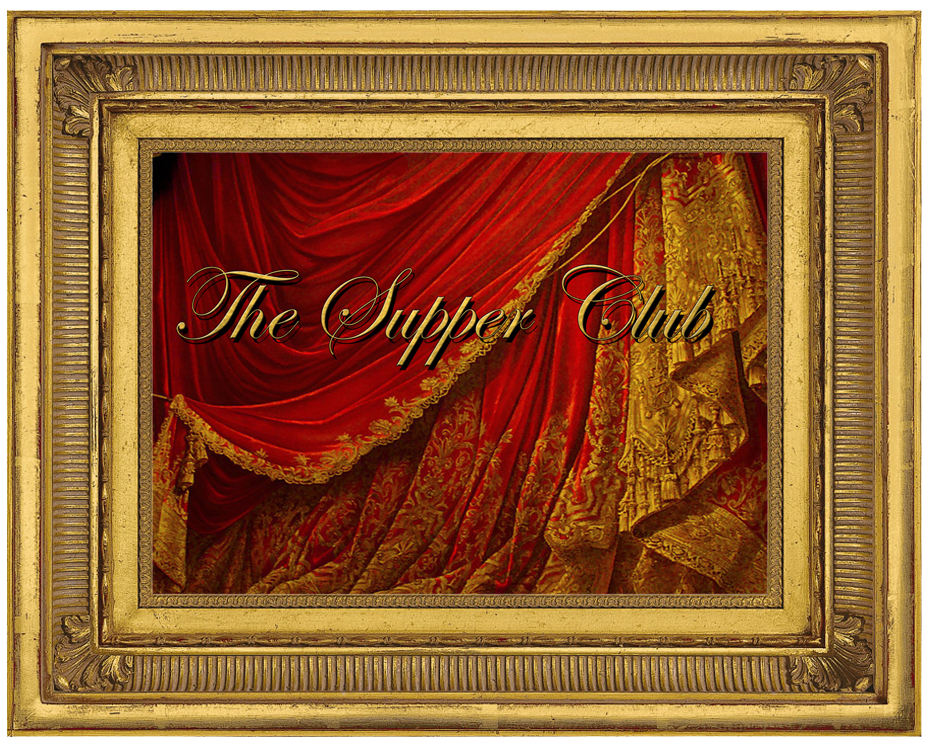
Napoleon Bonaparte (Napoleon I), born 15 August 1769, died 5 May 1821, was a military and political leader of France and First Emperor of France. His actions shaped European politics in the early 19th century.



Above: Napoleon the General
Born in Corsica and trained as an artillery officer in France, Bonaparte rose to prominence under the first French Republic (founded on 22 September, 1792, by the newly established National Convention, with the subsequent beheading of Louis XVI). He led successful campaigns against the enemies of France. In 1799, he staged a
coup d'etat and installed himself as the first Consul.
Below: Napoleon The Emperor

Napoleon's first wife was Josephine de Beauharnais. She had been married before and was widowed. Her first husband, Alexander de Beauharnais had been guillotined during the 'Reign of terror' (a period of violence that occurred for one year and two months after the onset of the French revolution, incited by conflict between rival political factions, the Girondins and the Jacobins, and marked by mass executions of "enemies of the revolution."). Joesphine had been imprisoned in the Carmes prison during that time, but was released five days after his execution.
She met Napoleon, six years her junior, in 1795 and became his mistress. In a letter to her in December, he wrote, "I awake full of you. Your image and the memory of last night’s intoxicating pleasures has left no rest to my senses." In January 1796, Napoléon proposed to her and they married in March.

Napoleon became the target of several enemies because of the power he was amassing. He used several plots and conspiracies against him to justify the re-creation of a hereditary monarchy in France, with himself as Emperor. Napoleon crowned himself Emperor Napoleon I on 2 December 1804 at Notre Dame Cathedral, Paris and then crowned Joséphine Empress. There are apocryphal claims that Napoleon seized the crown out of the hands of Pope Pius VII during the ceremony to avoid his subjugation to the authority of the pontiff, but the coronation procedure had been agreed in advance.

At Milan Cathedral on 26 May 1805, Napoleon was crowned King of Italy
. He created eighteen
Marshal of the Empire from amongst his top generals, to secure the allegiance of the army.
In the first decade of the nineteenth century, the French Empire under Napoleon engaged in a series of Napoleonic Wars, involving almost every major European power. After a streak of victories, France secured a dominant position in continental Europe and Napoleon maintained influence via an extensive network of alliances and nepotism.
Josephine did not bear Napoleon any children; as a result he divorced her in 1810 to marry Marie Luise of Austria (below).


Josephine, however, through her daughter, Hortense, was the maternal grandmother of Napoleon III. Through her son, Eugene, she was the great-grandmother of later Swedish and Danish kings and queens, as well as the last Queen of Greece. The current reigning houses of Belgium, Norway and Luxembourg also descend from her.
The invasion of Russia in 1812 marked a turning point in Napoleon's fortunes. His army was badly damaged in the campaign and never fully recovered. In 1813, he was defeated again at Leipzig. The following year France was invaded by a European coalition, and Napoleon was forced to abdicate. He was exiled him to the island ofElba. Less than a year later, he escaped Elba and returned to power, but was defeated at the Battle of Waterloo in June 1816, by the Duke of Wellington and his forces.
The Battle of Waterloo
Napoleon spent the last six years of his life under British supervision on the island of Saint Helena in the Atlantic Ocean, 2,000 km from any major landmass. In his first two months there, he lived in a pavilion on the Briars estate, which belonged to a William Balcombe. Napoleon became friendly with his family, especially his younger daughter Lucia Elizabeth who later wrote Recollections of the Emperor Napoleon. This friendship ended in 1818 when British authorities became suspicious that Balcombe had acted as an intermediary between Napoleon and Paris, and dismissed him from the island.
Napoleon moved to Longwood House in December 1815; it had fallen into severe disrepair. The Times published articles insinuating that the British government was trying to hasten his death and he often complained of the living conditions in letters to the governor and his custodian, Hudson Lowe. Napoleon criticised his captors—particularly Lowe. Lowe's treatment of Napoleon is regarded as poor by historians such as Frank McLynn. Lowe exacerbated a difficult situation through measures including a reduction in Napoleon's expenditure, a rule that no gifts could be delivered to him if they mentioned his imperial status, and a document that his supporters had to sign that guaranteed they would stay with the prisoner indefinitely.
There was sympathy for him in the British Parliament. Lord Holland gave a speech which demanded the prisoner be treated with no unnecessary harshness. Napoleon kept himself informed of the events through The Times and hoped for release in the event that Holland became Prime Minister. He also enjoyed the support of Lord Cochrane, who was involved in Chile's and Brazil's struggle for independence and wanted to rescue Napoleon and help him set up a new empire in South America, a scheme frustrated by Napoleon's death in 1821. There were other plots to rescue Napoleon from captivity including one from Texas, where exiled soldiers from the Grande Armée wanted a resurrection of the Napoleonic Empire in America. There was even a plan to rescue him with a primitive submarine. For Lord Byron, Napoleon was the epitome of the Romantic hero, the persecuted, lonely and flawed genius.

Above and Below: Lord Byron

In February 1821, his health began to fail rapidly and, on 3 May, two British physicians who had recently arrived attended him and could only recommend symptomatic relief
. He died two days later, after confession and the last rites at the hands of Father Ange Vignali.
His last words were, "France, armée, tête d'armée, Joséphine."("France, army, head of the army, Joséphine.")

In his will, he had asked to be buried on the banks of the Seine, but the British governor said he should be buried on St. Helena, in the Valley of the Willows. Hudson Lowe insisted the inscription should read 'Napoleon Bonaparte', Montholon and Bertrand wanted the Imperial title 'Napoleon' as royalty were signed by their first names only. As a result the tomb was left nameless. In 1840, Louis Philippe, King of the French, obtained permission from the British to return Napoleon's remains to France. The remains were transported aboard the frigate Belle Poule, which had been painted black for the occasion and on 29 November she arrived in Cherbourg. The remains were transferred to the steamship Normandie, which transported them to Le Havre, up the Seine to Rouen and on to Paris. On 15 December, a state funeral was held. The hearse proceeded from the Arc de Triomphe down the Chaps Elysee, across the Place du Concorde to the Esplanade des Invalides and then to the cupola in St Jérôme's Chapel, where it stayed until the tomb designed by Louis Visconti was completed. In 1861, Napoleon's remains were entombed in a sarcophagus in the crypt under the dome at Les Invalides.

While considered a tyrant by his opponents, Napoleon he is also remembered for the establishment of a civil code of law, of reforming Paris, and judicial reforms, which were to later have influence on the court system in much of Western Europe. His dynasty is also responsible for creating the present Louvre...


Napoleon's son, Napoleon II, never reigned. Napoleon II (Napoléon François Joseph Charles Bonaparte) was born at the Tuleries Palace by his second wife Marie Louise of Austria, in 1811.

The Tuileries Palace
was the royal palace in Paris, built by Catherine de Medici in 1564 after the death of her husband, Henry II of France.
It stood on the right bank of the Seine until 1871, when it was destroyed in the upheaval during the suppression of the Paris Commune.

It closed off the western end of the Louvre courtyard, which has remained open since the destruction of the palace.
Napoléon declared him his heir and gave him the style "His Majesty, The King of Rome". Three years later, the first French Empire, to which he was heir, collapsed. Napoleon wanted to abdicate the throne in favour of his toddler son, but the Allied Powers refused.
On 29 March 1814,Marie Louise and Napoleon II left the palace beat a protracted path to Austria via Rambouillet where they were met by Napoleon II's grandfather, Emperor Francis II of Austria, and the Emperor Alexander I of Russia. They left France forever and lived in exile in Austria.
In 1815, after his defeat at Waterloo, Napoleon abdicated in favour of his son, whom he had not seen since his exile to Elba. The day after Napoleon's abdication, the Government took the rule of France, in an effort to re-establish the monarchy under King Louis XVIII. The Commission held the power for two weeks, and it never summoned Napoleon II as emperor, and no regent was ever appointed. Napoleon II was probably never aware at the time that he had been proclaimed Emperor in his father's will. Napoleon II died of tuberculosis in July 1832. The next Bonaparte to come to the throne of France (in 1851) took the name Napoleon III in deference to his cousin's theoretical reign.
During Napoleon I's reign, Louis-Napoléon's parents had been made king and queen of a French puppet state of the Kingdom of Holland. After Napoleon I's military defeats and deposition in 1815 and the restoration of the Bourbon monarchy in France, all members of the Bonaparte dynasty were forced into exile. The little Louis-Napoléon was brought up in Switzerland, living with his mother in Arenenberg Castle , and in Germany, being educated in Ausburg, Bavaria. As a young man he settled in Italy, where he and his elder brother Napoleon Louis espoused liberal politics and became involved with the Carbonari, an organization fighting Austria's domination of northern Italy.

Thus he secretly returned to France in October 1836, for the first time since his childhood, to try to lead a Bonapartist coup at Strasbourg. Louis Philippe had established the July Monarchy in 1830, and was confronted with opposition from many sides. The coup failed and Louis-Napoléon returned to Switzerland. When Louis-Philippe demanded his extradition, the Swiss refused to hand over a man who was a citizen and a member of their armed forces. In order to avoid a war, Louis-Napoléon left Switzerland of his own accord.
He was quietly exiled to the USA, and spent four years in New York. He secretly returned to France and attempted yet another coup in August 1840, sailing with some hired soldiers into Bolonge. This time, he was caught and sentenced to life imprisonment, albeit in relative comfort, in the fortress of the town of Ham. While in the Ham fortress, his eyesight reportedly became poor. During his years of imprisonment, he wrote essays and pamphlets that combined his claim to be emperor with progressive, mildly socialist economic proposals, which he came to define as Bonapartism. In 1844, his uncle Joseph died, making him the heir apparent to the Bonaparte claim. He finally escaped to Southport, Engalnd in May 1846 by changing clothes with a mason working at the fortress. A month later, his father Louis died, making Louis-Napoléon the clear Bonapartist candidate to rule France.
In January 1853 he married the Spaniard Eugénie de Montijo.

Above and Below: Eugénie de Montijo, queen consort of Napoleon III of France

The City of Paris honored their new empress by giving her a wedding gift of 600,000 francs, but at her request the money was used to build a college for females. Empress Eugenie subsequently made an official trip to Great Britain, with her husband Emperor Napoleon III, and this visit heralded the beginning of a close relationship between Empress Eugenie and Queen Victoria. Empress Eugenie, who was the last Empress of France, influenced her husband in foreign policy matters, and served as regent during his absence.
Napoleon III, is responsible for the ultimate layout of the Louvre. Once restored as Emperor, he set about joining the Louvre up and shifted into newly furnished apartments in the Richelieu wing...

The Napoleonic Apartments at Le Palais du Louvre:






An important legacy of Napoleon III's reign was the rebuilding of Paris. Part of the design decisions were taken in order to reduce the ability of future revolutionaries to challenge the government by capitalizing on the small, medieval streets of Paris to form barricades. However, this should not overshadow the fact that the main reason for the complete transformation of Paris was Napoleon III's desire to modernize Paris based on what he had seen of the modernizations of London during his exile there in the 1840s. With his characteristic social approach to politics, Napoleon III desired to improve health standards and living conditions in Paris with the following goals: build a modern sewage system to improve health, develop new housing with larger apartments for the masses, create green parks all across the city to try to keep working classes away from the pubs on Sunday, etc. Large sections of the city were thus flattened down and the old winding streets were replaced with large thoroughfares and broad avenues. The rebuilding of Paris was directed by Baron Haussmann, Prefect of the Seine department. It was this rebuilding that turned Paris into the city of broad tree-lined boulevards and parks so beloved of tourists today.

Above: Baron Haussmann and Napoleon
Napoleon III also directed the building of the French railway network, which greatly contributed to the development of the coal mining and steel industry in France, and thereby radically changing the nature of the French economy, which entered the modern age of large-scale capitalism. The French economy experienced a very strong growth during the reign of Napoleon III.
Although largely forgotten by later Republican generations, which only remembered the non-democratic nature of the regime, the economic successes of the Second Empire are today recognized as impressive by historians. The emperor himself was largely influenced by the ideas of the Industrial Revolution in England, and he took particular care of the economic development of the country. He is recognized as the first ruler of France to have taken great care of the economy; previous rulers considering it secondary.
Napoleon III, to this day, lacks the favourable historical reputation that Napoleon I enjoyed. Napoleon III has often been seen as an authoritarian but ineffectual leader who brought France into dubious, and ultimately disastrous, foreign military adventures.
He did, however, pay attention to the fate of working classes. His book Extinction du paupérisme ("Extinction of pauperism"), which he wrote while imprisoned at the Fort of Ham in 1844, contributed greatly to his popularity among the working classes and thus his election in 1848. Among other things, the Emperor granted the right to strike to French workers in 1864, despite intense opposition from corporate lobbies. Marxist sociologist Therborn has characterized the reign of Napoleon III as the "first modern bourgeois regime": one which combined a movement of mass support with bourgeois rule, albeit through authoritarian statist means.



















































































































